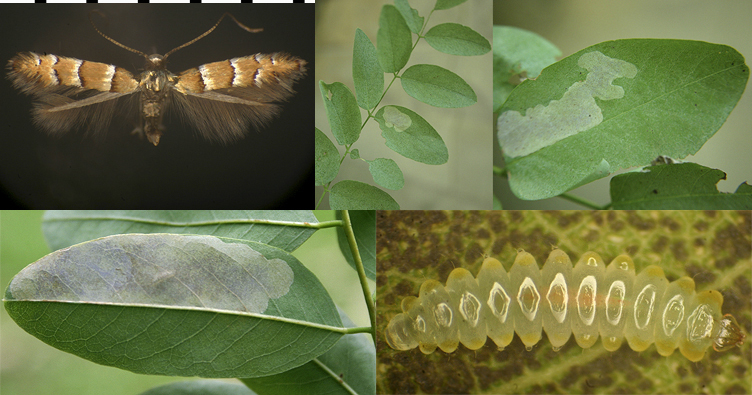
One species, Chrysaster ostensackenella (Fig. 1), occurs in North America. The larva makes a flat yellowish blotch on black locust, Robinia pseudoacacia (Fabaceae), in July and August. The mine occurs usually on the upperside, but occasionally on the underside, of the leaflet. It is nearly circular in its early stages, but later in development, it becomes irregular in shape. The adult is a very small, brilliantly shiny moth with an orange forewing marked with transverse silvery-white bands that are narrowly edged with black along their basal margins. This moth is unusual for a lithocolletine, in that the larva leaves the mine to pupate in a small cocoon, in similar fashion to many of the smaller gracillariines (e.g., Parectopa).

Figure 1. Chrysaster ostensackenella. Top: left, adult; center and right, early and late upperside leaf mines on black locust, Robinia pseudoacacia (Fabaceae); bottom: left, late-stage underside leaf mine on R. pseudoacacia, with larva visible in mine; right, mature larva.